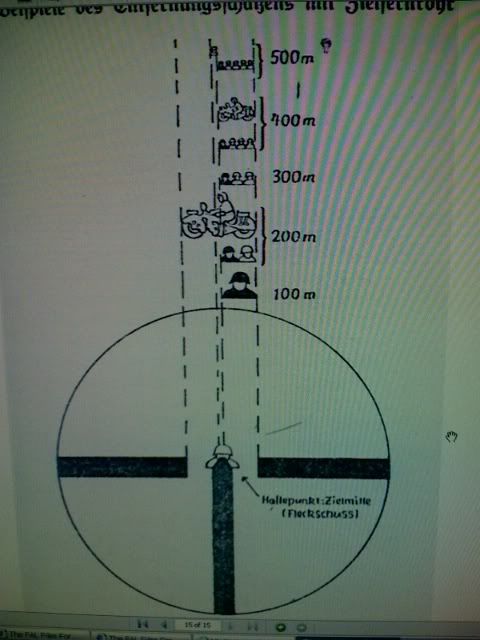Re: Range finding with Vintage scope
When I taught sniper schools with the M1C/Ds I taught range finding with the redical or front sight post.
It's not a whole lot differant then using Mil Dots.
You need to know the width of the front sight or redical and the width of the target.
Example:
The average width of the front sight on the M1 is .076. The width of the e-silhouette is 19 inchs.
Divide the target width by the post width or 19/.076 is 250.
So if the front sight covers the target then the target is 250 yards away. If it is half the width of the front sight, the target is 500 yards away. If the front sight is half the width of the target its 125 yards away.
The same can be done with the redical of the M-84 scope. The post in the scope is 3 MOA which computes to .03. Taking the same e-silhouette target, the redical (post) covers the target at 633 yards. (19/.03= 633)
The range I used was a Machine gun range with e-silhouette targets at randum ranges up to 1100 yards. The guys got pretty good at extimating ranges using this method.
You can do this with any rifle if you know the width of the front sight, and the width of the target.
The 1958 version of FM 23-5 manual for the M1 has a sniper section which talks about range estimation.


